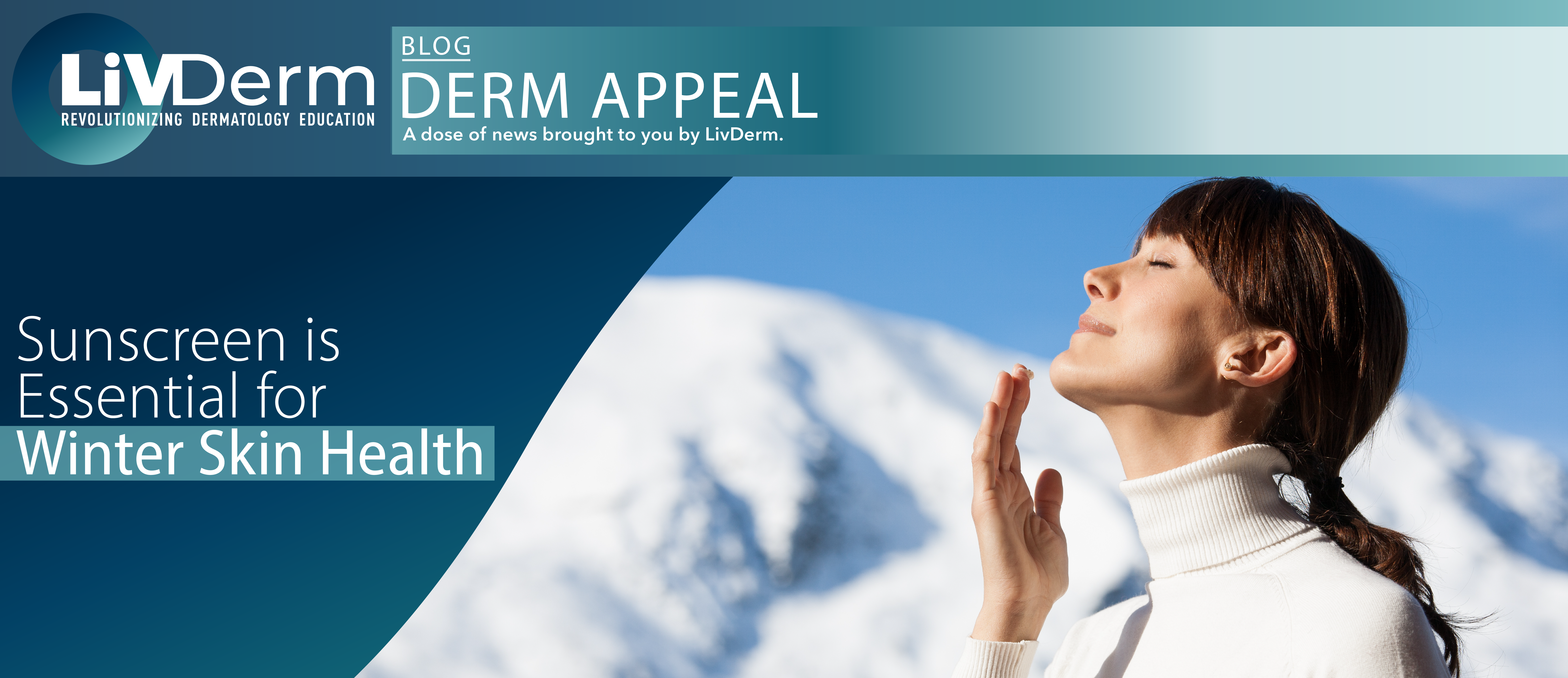Preserving skin health and preventing skin cancer require year-round diligence. Some patients may believe that the colder months are a time to let down their guard surrounding skin protection, but this time of year presents different, possibly greater, reasons to stay vigilant. Although most people equate hot temperatures with sun strength, several factors actually make winter a more dangerous time for ultraviolet exposure that contributes to wrinkles and even skin cancer. Dermatologists should emphasize this risk to patients and encourage them to engage in sun-safe practices – like wearing a broad-spectrum sunscreen – even in the winter months.
The winter sun and skin health
Temperature and ultraviolet (UV) exposure are not inextricably linked. Warm weather does not mean more UV rays; in fact, the Earth’s ozone layer (our delicate sunshield) is actually thinnest in winter, leaving skin susceptible to sun exposure and burns. According to The Skin Cancer Foundation, having five or more sunburns in a lifetime doubles a patient’s risk of developing melanoma, a great reason to avoid getting burned in any season.
The first and best line of defense against the winter sun is clothing. Covering as much of the body as possible provides protection against the cold, wind, snow, and sun. But, for areas of the body like the scalp, ears, face, neck, and hands that will likely be unclothed, a sunblock that protects against both UVA and UVB rays (broad spectrum) with an SPF of at least 30 should be applied liberally if sun exposure is likely. Patients should also be reminded that UVB rays can penetrate glass, so being outside is not a prerequisite for wearing sunscreen.
Protecting skin during winter activities
Even more important than incidental winter skin protection is guarding the skin from the sun, cold and wind while engaging in popular winter sports. Skiing, snowboarding, sledding, ice-skating, and other popular outdoor activities not only expose the skin to the sun’s UV rays, but the wind and speed involved create a harsh environment for the skin’s delicate moisture barrier. Prolonged time in cold temperatures also negatively impacts circulation, limiting the flow of oxygen- and nutrient-rich blood to the skin’s surface, resulting in dryness, irritation, and potential flares of any existing skin conditions.
For patients who enjoy outdoor winter sports, it’s important they be reminded to protect the skin not only from the sun with a broad-spectrum sunblock, but to also defend the delicate moisture barrier of the skin and lips with a balm containing emollients that prevent moisture loss and windburn. Reapply sunscreen and moisture balm at least every two hours while engaged in outdoor activities, and more often when sweating or encountering high winds that can weaken the efficacy of these products.
The snow-sun combination
Snow reflects up to 80% of UV light from the sun, meaning that when outside in snowy conditions, patients may be exposed to the same ray of sun twice. This also means UV rays will emanate from all sides, including underneath, necessitating the application of sunscreen to areas that may be overlooked (under the chin and ears) in the summer. Also, most UV rays can penetrate clouds, so even in overcast conditions, sunscreen is still necessary to prevent exposure and burns.
Time of day matters
For sun safety, the general suggestion is to engage in outdoor activities before 10am or after 4pm, when the sun’s rays are not as strong. In the summer, this concept is more obvious because the hot temperatures in the middle of the day remind patients that they are directly in the path of the sun’s shortest and strongest rays. This advice is less intuitive in the winter, however, because the warm midday sun may be the most temperate (and thus most enjoyable) time of the day. Unfortunately, in winter, the safest times to be outside for skin health are the coldest hours of the day; the warmth of the midday sun is often what raises temperatures enough for patients to comfortably engage in outdoor activities.
Factor in the altitude
Another consideration for winter sports enthusiasts is that for every 1000 feet of altitude above sea level, UV exposure increases 4-5%. Since skiing, snowboarding, and other popular snow sports involve mountainous terrain, it is important to factor in elevation – along with temperature, time of day, and length of expected exposure – when determining how to stay sun-safe during outdoor activities. The same general rules for sunscreen reapplication every two hours should be followed, but patients can consider shortening their time outside or avoiding midday sun, especially when in higher altitudes.
Key Takeaway
The sun’s harmful rays are still present – and potentially even more dangerous – in winter. Clothing is the best protection from the sun, wind and cold, but to protect areas of the body that must be exposed patients should liberally apply a broad spectrum SPF 30 every two hours, avoid being exposed to midday sun for long periods, factor in their altitude, and remember the reflective properties of snow.

















